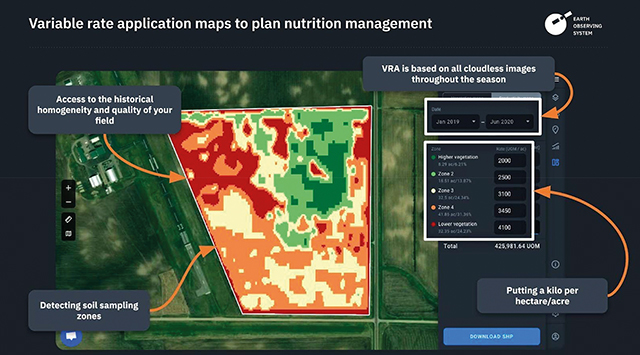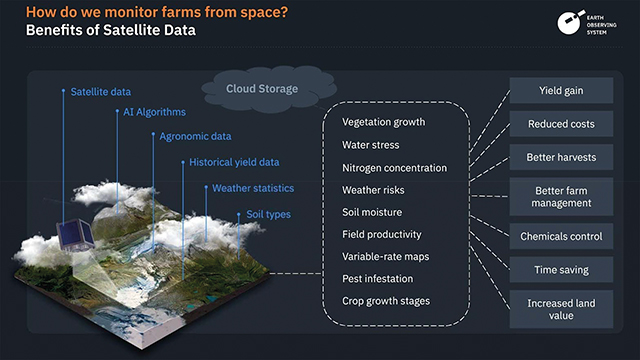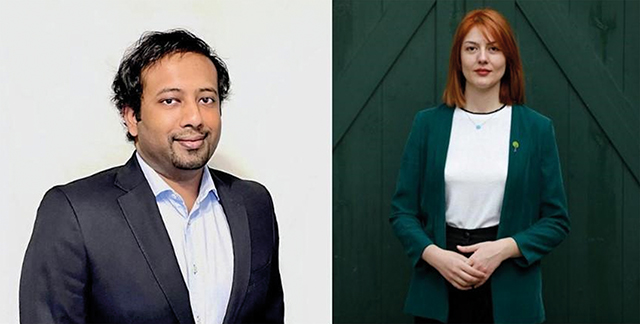Georgia’s agricultural scene has long been a backbone of its economic strength. From local agro-bazaars to a booming agri-tourism and winemaking industry, Georgia has maintained a well-earned “green thumb.” As new technologies become available to the hard-working farming communities of the country, a new partnership sets out to advance the efficiency of these small businesses.
EOS Data Analytics has announced a new partnership with the Georgian Farmers’ Association (GFA). The companies have pledged to pursue the goal of introducing Georgian farmers to satellite-driven precision agriculture tools to enhance agricultural operations and product quality. EOS Data Analytics is a global provider of AI-powered satellite imagery analytics and has been working with satellite imagery in a broad range of applications since 2015.
Since 2012, GFA has worked with Georgian farmers and agribusinesses in a multitude of roles, including networking, capacity building, and navigating government policy. Over 5,000 farmers have grown from their services to elevate their quality of life, become flourishing businesses, and overall enhance the nation’s agricultural sector.
GEORGIA TODAY sat down with Brijesh Thoppil, Director of Strategic Partnerships at EOS Data Analytics, and Ani Zurabashvili, Head of the Service Department at GFA to discuss the new partnership and what’s in store for the farmers in Georgia’s lush fields.

EOS Data Analytics has a wide variety of applications, but what about the crop rotation application makes it lucrative for Georgian farmers?
Brijesh: That’s a great question. Our main focus is in the agricultural sector, as it is the oldest industry in the world which requires a digital transformation. These are changing the patterns in the agricultural sector and farmers are not able to get proper insights. They see the requirement for such a platform using available technologies.
I would say we’re not short of competition in the sector, but when we look at the different solutions, I would say ours is quite comprehensive. We integrate satellite data, weather, and agronomic insights and the potential outcomes, and all this technology is controlled with the help of AI and machine learning algorithms.
The key benefits for the farmers and stakeholders come in the form of increased productivity and reduced loss of product. That is where valuable partners like GFA come into action. They are able to transfer knowledge about the platform to the farmers.
Ani: That’s why we were interested in this product. It solves real time problems that are faced by farmers who may not know the status of their crops or have access to forecasts. The farmers are able to apply these solutions to their model, which makes it overall more profitable. We have the resources to train these farmers and transmit this knowledge.

The implementation of this technology will surely prove a significant learning curve for farming communities. How do you intend to tackle this?
Ani: We provide not only access to the platform but also thorough training. In addition, we also deliver monthly and yearly reports to the farmers so they can use this in their planning. Overall, our focus is to transmit full knowledge so they can use the data to help with farm management. We’re focusing on this very seriously.
Brijesh: In our partnership with GFA, we aim to bring them a digital agricultural platform along with the training support. We provide regular training sessions to our partner’s team members to make them not only experts of the platform, but also to understand the industry and learning materials.
The most important next step is the collection of data from the farmers themselves. This data is input into the platform, then everything else is done by the platform itself. With this, it will deliver statuses and farm conditions.
What is the timeline for introduction to the Georgian farming community?
Ani: Since we have already launched the product, we are now focusing on regional level meetings. We’ve opened new regional offices that will mobilize the farmers and present the platform to them. From big farmers to smaller farmers, we aim to give them that knowledge and transmit the information from Brijesh and EOS Data Analytics.
Also, we are looking seriously at long-term collaboration. This includes government and financial elements, as well as other related agribusinesses. First, we’ll get a feel for the market and then make plans from there.
Brijesh: We’re also capable of delivering complex and custom projects which may arise when GFA engages with government institutions in Georgia. If any project requires complex solutions for these types of clients, we are able to deliver this.
What are the significant roadblocks and obstacles you both anticipate encountering in this project?
Brijesh: For us as a product company, the single biggest challenge is the lack of expertise in the agriculture industry, or the delay in technology adoption. This mostly happens in developing economies where there is a lack of skilled people to understand, interpret, and manage the data to help the farmers. This is why our partnership with GFA is so important, as they have experience in agriculture.
We have almost completed the first phase of training for the team members of GFA, and there will be several more training sessions planned across quarters. They are able to understand it quickly because of their expertise in the agriculture sector and their close relationship with the farmers. While the lack of technology know-how may be a roadblock, we will be able to overcome it in due time.
Ani: Introducing a new product is a challenge itself, especially a digital product. In the Georgian agricultural sector there is a tradition-driven attitude and this is a challenge. However, we are happy to be the pathfinder in bringing this tool to Georgian farmers. As Brijesh mentioned, we do have the resources to assist, instruct, and help them understand this comprehensive data.
What does the EOSDA and GFA partnership hold in the future for the agricultural scene in Georgia?
Ani: Since the new development in satellite imagery is making farmers shift their practices to smart agriculture, we believe this partnership will be long-term and unlock more opportunities. There are many more potential goals and projects.
Brijesh: We are in this partnership with GFA and Ani’s team for the long term. Our goal is to bring sustainable practices to Georgia’s agriculture industry. We also want to provide opportunities for farmers to improve their income and socio-economic conditions.
Personally, I also believe that the partnership will bring forward many other stakeholders that will share their information and experience of digital agriculture technology. This will enable more collaboration with a wider agricultural supply chain. There are other industry players that could play a part in Georgia’s agricultural sector. In other regions, we see partnerships even with the telecom sector that promote sustainable agricultural practices.
Interview by Michael Godwin














